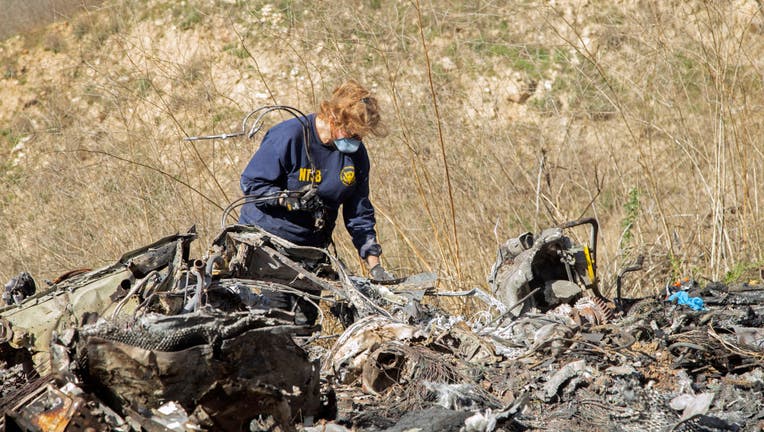Air traffic controllers sued by helicopter company in fatal Kobe Bryant crash

CALABASAS, CA - JANUARY 27: In this handout photo provided by the National Transportation Safety Board, an investigator works at the scene of the helicopter crash that killed former NBA star Kobe Bryant and his 13-year-old daughter Gianna on January
CALABASAS, Calif. - The company that operated the helicopter that crashed in Calabasas in January, killing Laker legend Kobe Bryant and eight others, is fighting back against lawsuits over the tragedy, filing a suit of its own contending air-traffic controllers are to blame for the crash.
The suit, filed last week as a cross-complaint to litigation against Island Express Helicopters, contends the crash was "caused by a series of erroneous acts and/or omissions'' by a pair of air-traffic controllers at Southern California TRACON, or terminal radar approach control.
Ian Gregor, a spokesman for the Federal Aviation Administration, which operates the facility, said the agency "does not comment on pending litigation."
The helicopter, a 1991 Sikorsky S76B piloted by Ara Zobayan, crashed amid heavy fog on Jan. 26 on a Calabasas hillside, killing the pilot and his eight passengers, including Bryant and his 13-year-old daughter Gianna.
RELATED:
• Kobe Bryant's widow sues helicopter operator for deaths
• Kobe Bryant, daughter, 7 others killed in helicopter crash in Calabasas
• Video seemingly captures audio of Kobe Bryant’s helicopter crashing into Calabasas hillside
• NTSB releases thousands of documents in Kobe Bryant helicopter crash probe
• Federal officials investigate deadly helicopter crash that killed nine, including Kobe Bryant
At least four lawsuits have been filed against Island Express Helicopters in the months since the crash, including one by Bryant's wife, Vanessa, and others by relatives of other passengers aboard the aircraft.
In its cross-complaint, attorneys for Island Express contend that Zobayan contacted the SoCal TRACON facility and requested "flight following," or radar assistance. The request, however, was denied by an air-traffic controller who said, "I'm going to lose radar and comms probably pretty shortly," according to the lawsuit.
"This denial was improper because radar contact had not been lost and services were being denied based on the possibility that they might be lost at some point in the future," the lawsuit states. "The fact that (the pilot) was able to contact (TRACON) four minutes later, and its transponder was still observed by the controller, proves that the prediction of lost contact was not accurate and services could and should have been provided continuously."
RELATED: News related to the life and death of NBA legend Kobe Bryant
The lawsuit claims that the air-traffic controller who initially spoke to Zobayan was relieved a short time later by a second controller. The first controller, however, failed to inform his replacement "as to the existence" of the helicopter, even though he had never "terminated radar services" with the helicopter, leading the pilot to assume "he was still being surveilled and being provided flight following."
It was at roughly that point that Zobayan reported his plan to begin climbing above the clouds and fog while banking to the left. A short time later, the helicopter plunged rapidly into the ground, resulting in the fiery crash that killed all aboard, according to the lawsuit.
The suit accuses the initial air-traffic controller of "multiple errors," including "failure to properly communicate termination of radar flight following, incomplete position relief briefing and lack of knowledge of current weather conditions." Those failures added to the pilot's stress, workload and distraction, and ``significantly impacted the pilot's ability to fly the aircraft."
The suit seeks unspecified damages.

